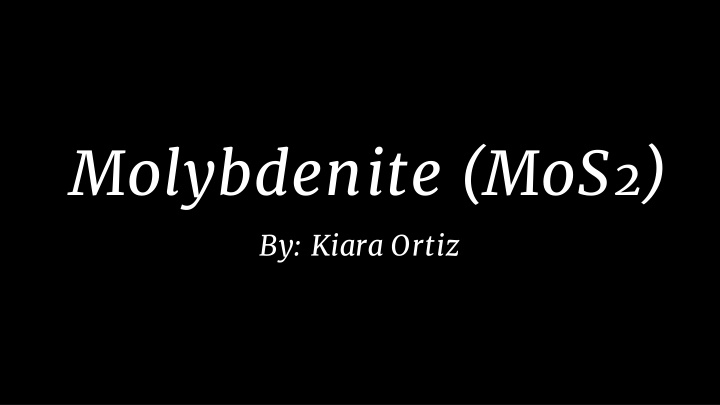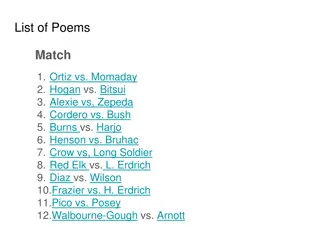
All About Molybdenite: Physical Properties, Structure, and Uses
Molybdenite is a mineral known for its black color and metallic luster, with sheets of molybdenum and sulfur atoms forming its structure. It has various optical and crystallographic properties, and is used in electronics and as a lubricant. Discover more about this mineral's characteristics, varieties, facts, and locations.
Download Presentation

Please find below an Image/Link to download the presentation.
The content on the website is provided AS IS for your information and personal use only. It may not be sold, licensed, or shared on other websites without obtaining consent from the author. If you encounter any issues during the download, it is possible that the publisher has removed the file from their server.
You are allowed to download the files provided on this website for personal or commercial use, subject to the condition that they are used lawfully. All files are the property of their respective owners.
The content on the website is provided AS IS for your information and personal use only. It may not be sold, licensed, or shared on other websites without obtaining consent from the author.
E N D
Presentation Transcript
Molybdenite (MoS2) By: Kiara Ortiz
Physical Properties: Color: Black, Lead Grey or Grey Hardness: 1 - 1 Specific Gravity: 4.62-4.73 Luster: Metallic Transparency: Opaque Crystal System: Hexagonal Tenacity: Flexible Cleavage: Perfect {0001}
Structure: Sheets of Molybdenum atoms (blue) sandwiched between sulfur atoms (yellow) to form a layer The layers are stacked on top of one another and are poorly bonded The weak bonding gives Molybdenite it s slippery feel
Optical Properties Type: Anisotropic Anisotropism: Very strong Pleochroism: Strong
Crystallography: Polytype: Molybdenite-2H Molybdenite-3R Formula: MoS2 MoS2 Crystal System: Hexagonal Trigonal Space Group: P63/mmc R3m
Varieties of Molybdenite: Femolite (Mo, Fe)S2 Rhenian Molybdenite: (Mo, Re)S2
Facts: Confused with Graphite From the Greek word Molybdos meaning Lead Environment usually is in high temperature hydrothermal veins Found in igneous and metamorphic rock Currently being researched as a possible replacement semiconductor for silicon in transistors in electronic chips Essential ore of Molybdenum
Uses: Used in electronics Finely ground Molybdenite is used as a lubricant to reduce friction between sliding metal parts Ground Molybdenite sometimes used as an additive to some types of high performance grease Used for making speciality alloys (because Molybdenite is an essential ore of Molybdenum)
References: Molybdenite. (n.d.). Retrieved December 1, 2019, from https://www.mindat.org/min- 2746.html. Rhenian Molybdenite. (n.d.). Retrieved December 1, 2019, from https://www.mindat.org/min-25604.html. Barthelmy, Dave. Molybdenite Mineral Data, http://webmineral.com/data/Molybdenite.shtml#.XfCH8uhKhPY. King, Hobart M. Molybdenite. Geology, https://geology.com/minerals/molybdenite.shtml








